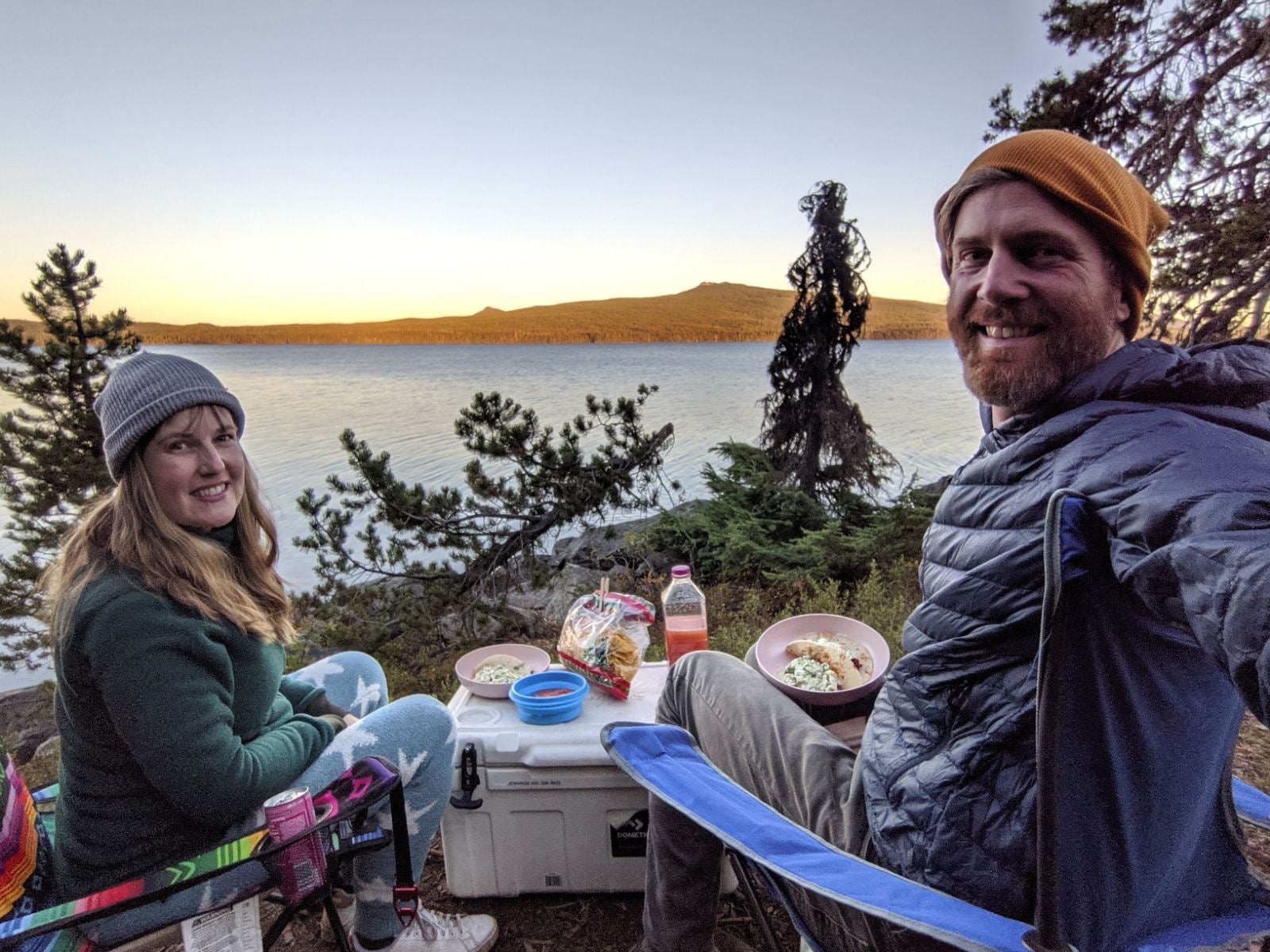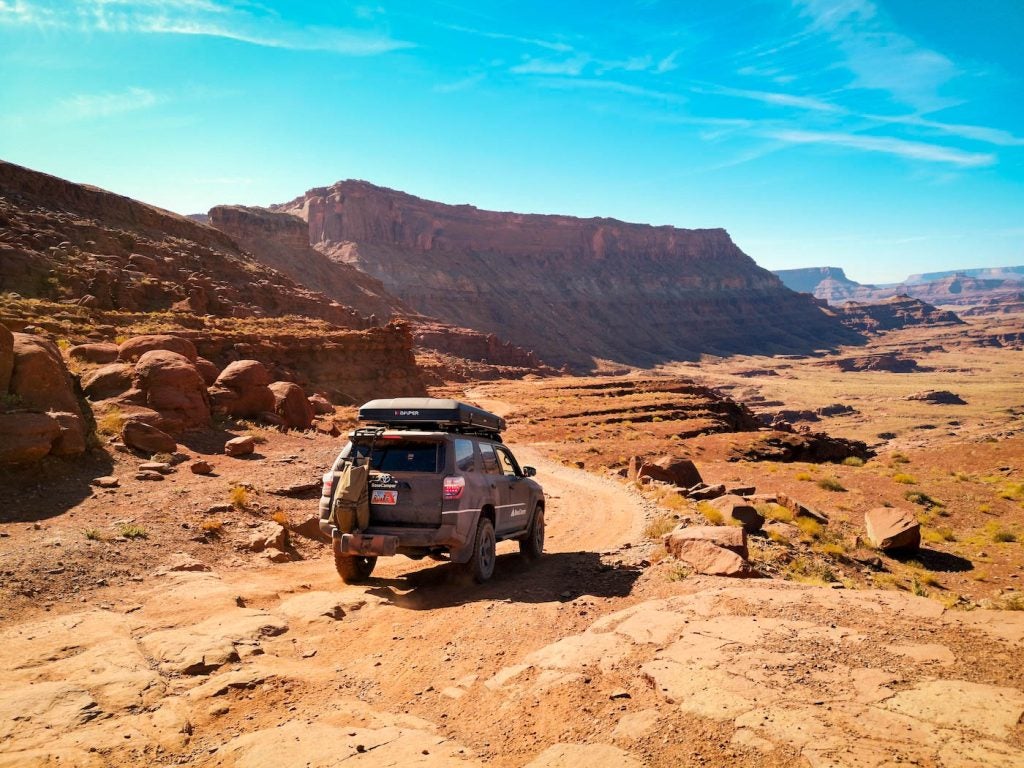The award-winning film “Elemental: Reimagine Wildfire” is finally available to the streaming public! After more than 200 theater screenings across the U.S., you can watch it today on Apple, Amazon and more. Check out the streaming page on the film’s website, or just search on major streaming platforms.
Trip Jennings — producer, adventurer and director of the documentary — spent five years chasing wildfires, scientists and Native American fire experts around the U.S. while using The Dyrt PRO to find campsites. In his film, Jennings delves into the history of wildfire, analyzes present challenges and failures, and offers a new optimistic perspective on how we can coexist with such a powerful element. We interviewed him to learn more about his findings and to hear how The Dyrt was a key resource for his filmmaking process.
Interview:

Tell us about Elemental: Reimagine Wildfire. What inspired you to make this film? What conclusions does it draw?
Over the last 20 years, the destruction of homes and communities from wildfires has gone up exponentially. At the same time, we’ve spent billions of dollars in the U.S. on vegetation management to reduce wildfire risk, often far from the homes and communities we hope to protect. So, we set out to find out why our current response isn’t working and what other strategies we might try.
What we found was actually quite surprising. There are researchers, firefighters and Native American fire experts who have developed ways to build new structures and retrofit old ones that make them far more resistant to wildfire. And, if we use those techniques on a large scale, we could likely end the community-destruction problem.
That was pretty shocking to me, because if you ask so many professionals after a tragedy like the Camp Fire, where 19,000 homes and buildings were lost, they’ll say, “There’s nothing that could have been done in such an extreme fire.”
One of the sad realities I learned about fire is that lots of the money spent to reduce fire risk is likely taking us in the wrong direction from a climate perspective. That’s because when we cut trees to reduce burnable fuel in forests we release carbon, which warms the climate and makes large fires more likely.
This film is really my journey to understand what we need to do to reduce fire risk and how to get it done. We’re getting a lot of great feedback from scientists to policymakers, survivors and first responders. It turns out that lots of what needs to be done to protect homes can be done in a few weekend projects by people living in fire-prone landscapes.
What was the process for making the film? How did using The Dyrt PRO help?
In order to explain how wildfire works, we had to capture rare video shots that really explained what we hoped to convey. For example, I spent nearly a month, spread out over the course of two years, filming a family of spotted owls near Yosemite National Park. They lived in a recently burned area of forest a short bushwhack from the road. I needed to show the rebirth of an ecosystem after a major fire, so I followed the male until he found a mate. Then I came back the following spring and found his successful nest full of two fluffy owlets. Then, during another two trips, I watched the owlets grow until they took their very first flight!
Now, The Dyrt users probably know that finding lodging or campsites close to one of our most popular national parks is nearly impossible for spontaneous summer or fall visits. But, using The Dyrt PRO, I was able to find campsites within walking distance to the nest for EVERY TRIP.
Then, as I was driving around rural areas of Oregon, Washington and California filming wildfires, I had no idea where I would end up each night because I was responding to weather, evacuation orders, and changing fire conditions. I used The Dyrt to find dozens of campsites that I would never have found any other way. It was a truly essential tool!
Tell us about your relationship with camping. Have you always been an avid camper?
Yes, I’ve been camping since before I can remember. My parents were very outdoorsy and I upped the ante as soon as I could drive. Since then I’ve spent as much time as possible outside and I’m proud to report that I’ve actually logged multiple years where I spent more nights camping in a tent or sleeping bag than inside. It helped that my job was filming for National Geographic and kayaking in remote corners of the world.
Now that I’m a father, I’ve added a little more comfort to the setup with a converted Sprinter van. But getting my toddler into the wilderness is also really important to me, not just car camping. So, we go on a week-long wilderness canoe trip each year where we tent camp at a different site every night and he loves it!
What should campers know about the upcoming wildfire season?
The increased amount of wildfire we’re seeing these days really does add a new challenge to camping. Still, if you do a little bit to plan around it, you can minimize the impact and stay safe. There are three main factors to consider: smoke, falling trees and evacuations.
The most immediate factor is coming into contact with an actual wildfire, which can be terrifying and risky. Unless you’re on a particularly long trip, you can just add checking on wildfire forecasts into your planning. If there’s potential for a Red Flag day during your trip, it’s really worth changing the location or timing of your trip.
Next is the potential for falling branches or widowmakers in an area that was recently burned. This is pretty easy to avoid: don’t camp under burned or dead trees.
Finally, smoke. I like to check wildfiresmoke.ca a day or so before heading out. The site includes a visual smoke forecast for most of North America and it’s the best I’ve found. Also, check AirNow which shows the actual air quality Index. If it’s over 100 where I’m planning to camp, I’ll think about a different place or time. If it’s over 150, it’s a no-go for sure.



